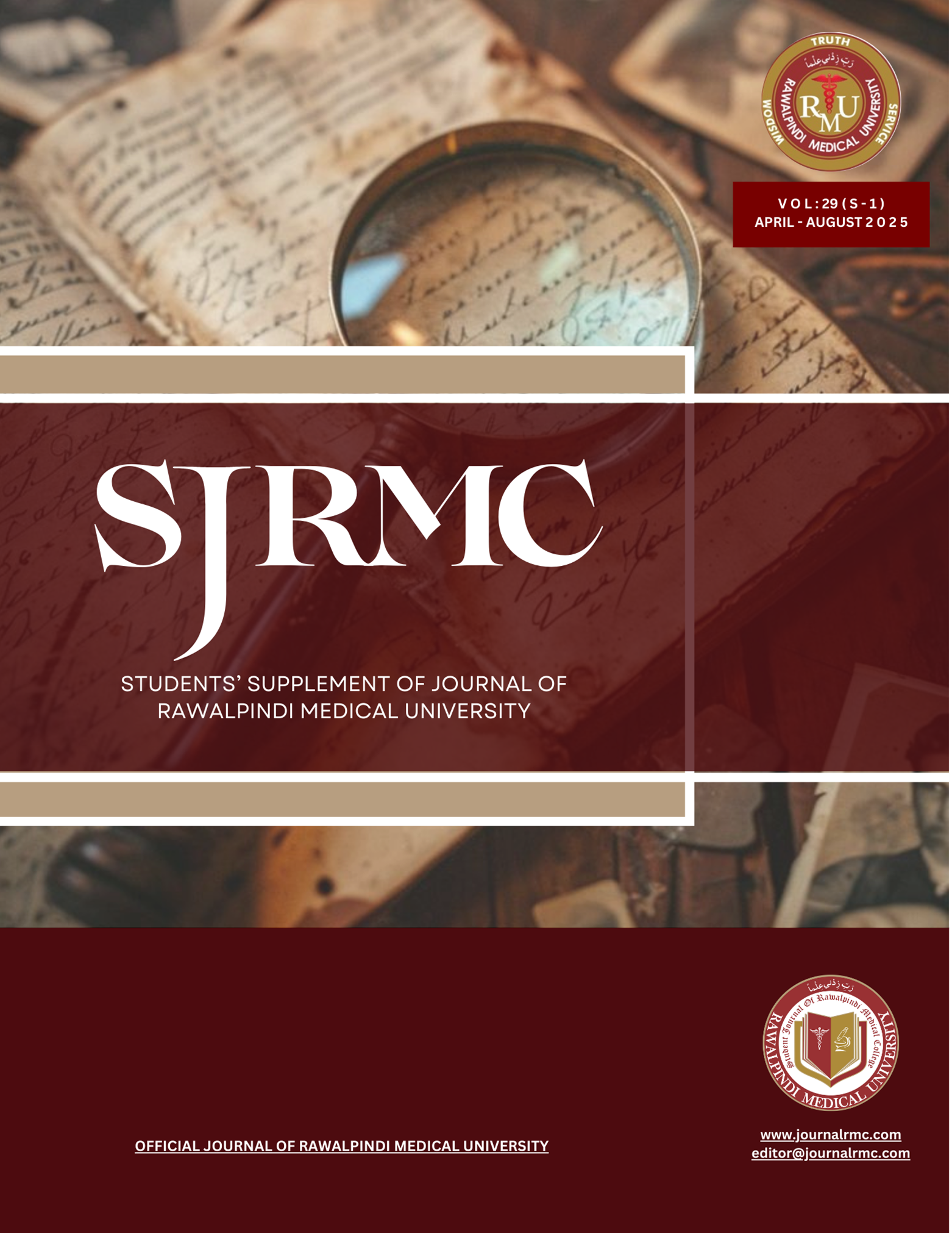Abstract
Abstract:
Objective
To evaluate the effectiveness of foot insoles in improving foot alignment, enhancing arch formation,
reducing pain and discomfort, and improving functional capacity in the pediatric population with pes planus
(flatfoot).
Study Design
A Descriptive Observational Study
Place & Duration of Study: This study took place at Benazir Bhutto Hospital Rawalpindi and lasted six months,
from May 1st, 2023 to November 31st, 2023.
Material and Methods
This study, conducted at Benazir Bhutto Hospital (BBH) Rawalpindi, examined the effects
of shoe insoles on 50 children aged 6 to 12 years with flexible pes planus who selected using nonprobability
consecutive sampling after providing informed consent. Children with flexible pes planus and no additional deformities were included, while those with rigid pes planus or noncompliance with insole use were excluded. A standardized questionnaire was used to gather data at baseline, 3 months, and 6 months, which included demographic information, the Foot Function Index (FFI), and the Visual Analog Scale (VAS). Statistical analysis was carried out using SPSS version 25.0, with descriptive statistics and paired sample t-tests used to analyze changes in VAS and PFFI scores
over time and the effectiveness of the intervention.
Results
The study comprised 50 pediatric patients with flexible pes planus, ranging in age from 8.94 ± 1.69 years.
There were 44% boys and 56% girls, with 68% coming from urban and 32% from rural areas. In 60% of
participants, the disease affected the right side, whereas 40% affected the left. Foot pain VAS scores dropped
significantly, from 5.2 ± 1.1 at baseline to 3.1 ± 0.9 at 3 months and 2.3 ± 0.8 at 6 months (p < 0.01). The Pediatric
Foot Function Index (PFFI) scores improved considerably from 72.5 ± 10.3 at baseline to 50.3 ± 8.7 at 6 months (p < 0.01). There were no major side effects observed, while 15% of individuals experienced moderate discomfort that resolved within a few weeks. P-values < 0.05 were considered significant.
Conclusion
The study found that using shoe insoles in children with flexible pes planus significantly reduced foot
discomfort and improved foot function over a 6month period. Foot pain VAS scores dropped significantly, from 5.2
± 1.1 at baseline to 3.1 ± 0.9 at 3 months and 2.3 ± 0.8 at 6 months (p < 0.01). The Pediatric Foot Function Index
(PFFI) scores improved considerably from 72.5 ± 10.3 at baseline to 50.3 ± 8.7 at 6 months (p < 0.01). There were
no major side effects observed, while 15% of individuals experienced moderate discomfort that resolved within a few weeks. P-values < 0.05 were considered significant.
Conclusion: The study found that using shoe insoles in children with flexible pes planus significantly reduced foot
discomfort and improved foot function over 6 months.
Keywords
foot insoles, pediatric pes planus, flat foot, medial longitudinal arch

